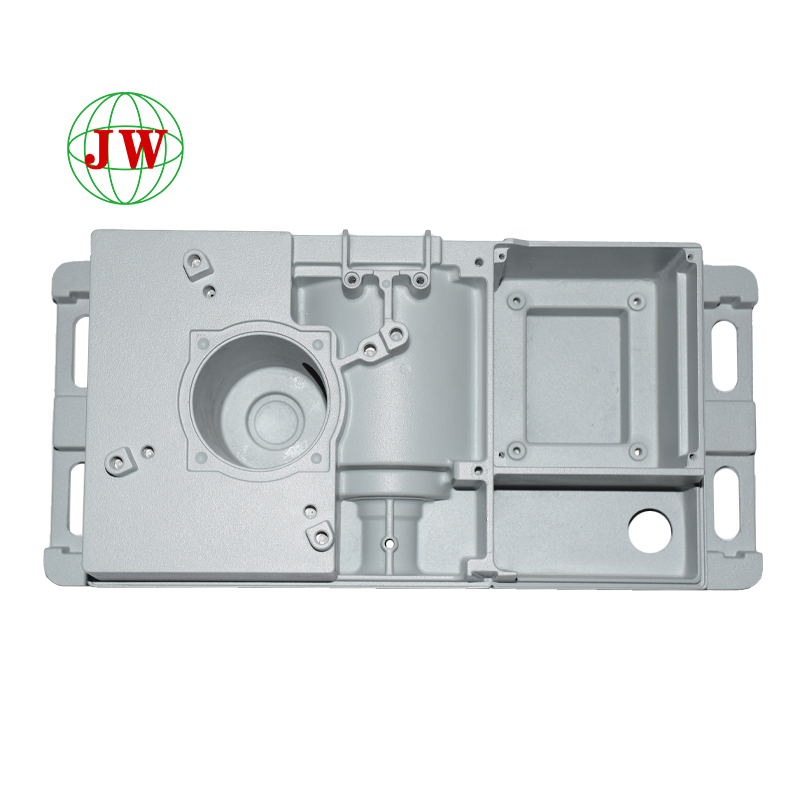
Shrinkage and porosity of die-casting parts, these cores need to be known!
2024-03-27 14:20
1. Reasons for the existence of shrinkage and porosity in die-casting parts
There is only one reason for the phenomenon of shrinkage and porosity in die castings, which is the phase change shrinkage that inevitably occurs when the metal melt transforms from a liquid phase to a solid phase after filling. Due to the solidification characteristics of die castings, which are cooled from the outside to the inside, when the wall thickness of the casting is large, shrinkage and porosity problems will inevitably occur internally.
Shrinkage and porosity of die-casting parts, these cores need to be known!
So, fordie-casting parts, especially for thick die-casting parts, the problem of shrinkage and porosity is inevitable and cannot be solved.
2. The only way to solve the shrinkage and porosity defects in die-casting parts
The problem of shrinkage and porosity in die-casting parts cannot be completely solved from the die-casting process itself. To completely solve this problem, one can only go beyond the process or seek solutions outside the system. What is this method?
From the perspective of process principle, solving the shrinkage and porosity defects in castings can only be carried out according to the process concept of feeding. The phase change shrinkage during the solidification process of castings is a natural physical phenomenon, and we cannot reverse the laws of this natural phenomenon, but can only follow its laws to solve this problem.
3. Two ways to supplement
There are two ways to feed castings, one is natural feeding, and the other is forced feeding To achieve natural shrinkage, in our casting process system, there must be process measures that can achieve "sequential solidification". Many people intuitively believe that using low-pressure casting method can solve the shrinkage and porosity defects of castings, but the fact is not the case. Using low-pressure casting process does not mean that it can solve the shrinkage and porosity defects of castings. If the low-pressure casting process system does not have any shrinkage process measures, then, The blank produced by this low-pressure casting method may also have 100% shrinkage and porosity defects.
Shrinkage and porosity of die-casting parts, these cores need to be known!
Due to the inherent characteristics of the die-casting process, it is difficult and complex to establish a natural "sequential solidification" process. The most fundamental reason may also be that the "sequential solidification" process requires a relatively long solidification time for the casting, which is somewhat contradictory to the die-casting process itself.
The biggest characteristic of forced solidification and shrinkage is the short solidification time, which is generally only one fourth or shorter of the "sequential solidification". Therefore, adding forced shrinkage process measures on the basis of the die-casting process system is suitable for the characteristics of the die-casting process and can effectively solve the problem of shrinkage and porosity in die-casting.
4. Two degrees of mandatory shrinkage
Squeeze feeding and forging feeding
There are two levels to achieve forced shrinkage of castings. One is the basic degree to which shrinkage and porosity defects can be eliminated, and the other is the degree to which broken grains or forged structures can be achieved inside the blank. If different words are used to express these two different levels, then we can use "extrusion shrinkage" to express the former, and "forging shrinkage" to express the latter.
It is important to pay full attention to the concept that feeding is a direct means and cannot be achieved indirectly. In terms of technology, we can have a process parameter to express it, which is "feeding pressure".
In physical principle, the concept of pressure can appear in two situations. One is in the liquid situation, that is, "Archimedes Law". To clarify, we define it as "liquid pressure", and the other is in the solid situation, that is, we define it as "solid pressure". It should be noted that the application conditions of the concept of pressure in these two different states will cause big problems if we confuse them.
Liquid pressure "is only applicable to liquid systems, and its pressure direction can be transmitted and turned, but it is completely not applicable in solid phase systems.
The feeding of die-casting parts occurs between semi-solid and solid states, and its pressure value is directional, which is a vector pressure with the same direction as the applied feeding force.
So, it is completely wrong to think that by increasing the pressure of the injection cylinder of the die-casting machine and increasing the injection filling specific pressure to solve the shrinkage and porosity of the die-casting, the idea that this injection specific pressure can be transmitted to the entire solidification stage of the casting and achieve the idea of casting shrinkage filling is completely wrong.
Conclusion;
There are many conditions for producing qualified die castings, and the selection of the above die casting process parameters is only one aspect, such as the design of the pouring and overflow system of the die casting mold, the manufacturing accuracy of the mold, the state of the die casting machine, the technical level of the die casting operator, and the selection of the coating used for die casting. All of these factors will have an impact on product quality. When problems arise, they should be considered from multiple perspectives and from all aspects, not limited to a single aspect, Only in this way can we quickly solve the problem.
Get the latest price? We'll respond as soon as possible(within 12 hours)













